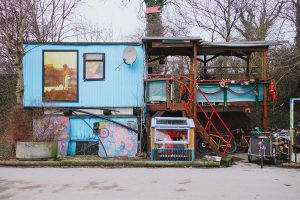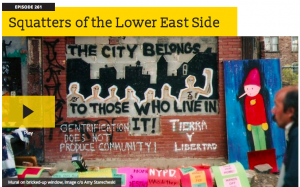Group Members: Melanie, Azzal, Ashwag, Tanner, Patrick, Danielle
The squatting movement and the prefigurative Christiania community in Denmark worked as a critique by separating themselves from the norm and by resisting integration with mainstream Copenhagen. They believed in having physical space to be able to organize further political actions. Their acts served as performance by carrying out street theater political actions involving several hundred participants.
The social issues this action of the Christiania community hoped to reframe and fix was squatting activism, creating a free town, having physical space to be able to voice your opinion freely. They wanted to continue occupying abandon buildings and helping people find homes. Squatting and taking over empty buildings seemed to be more of a solution than a problem to community members of Christiana and other squatting activists, also many believed that putting a roof over ones’ head is a necessity and therefore squatting was extremely essential.
Squatting in NYC, gentrification, homelessness, unaffordable rents. “Squatters also saw themselves as activists for affordable, or free, housing in a city that was plagued by homelessness.” “The city would sell the squatter’s buildings to a third party, a non-profit organization called the Urban Homesteading Assistance Board. UHAB would then turn the buildings over to the squatters and help them get loans so they could bring the buildings up to code.After years of negotiation, the deal went through in 2002 — the city sold eleven buildings to UHAB, for one dollar each. And UHAB began working with the squatters to turn their buildings from squats into limited-equity, low-income co-ops.”

Collectively as a group we chose 42nd Street Time Square as our stage for a performative intervention related to squatting. Mainly because its a highly populated area, always being covered by the media, plenty of tourist and other people carrying out performative interventions.
-
Sources:
- 2017, Delaney Hall- Squatters of the Lower East Side
- 2016, Frank Morales and Bonnie Faulkner- The Squatter Movement in New York City: Seizing Housing
- Di Feliciantonio, C. (2017). Spaces of the Expelled as Spaces of the Urban Commons? Analysing the Re‐emergence of Squatting Initiatives in Rome. International Journal of Urban and Regional Research, 41(5), 708-725.




